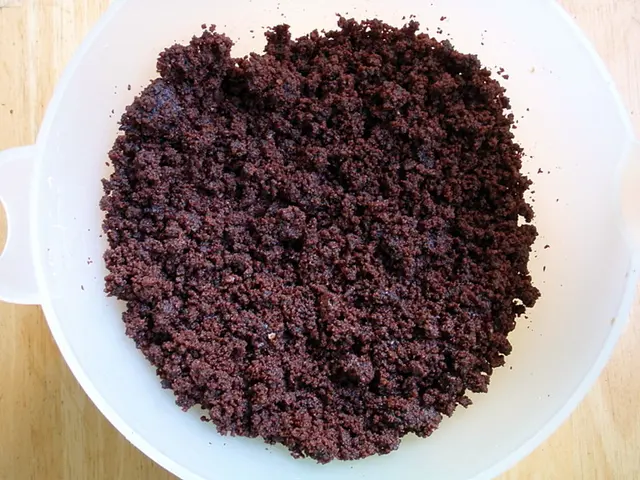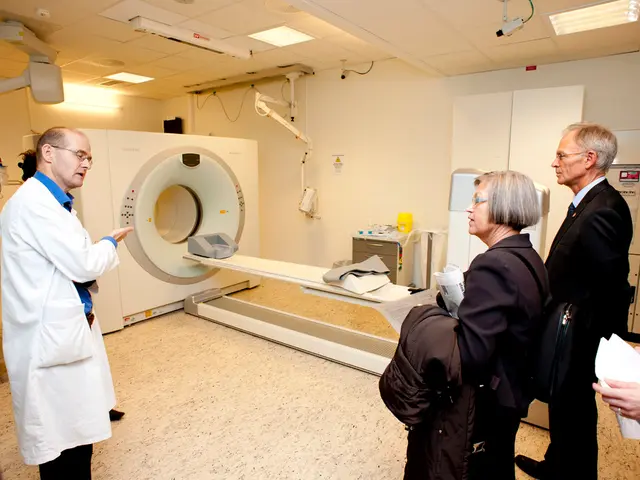Differentiating Age Spots from Skin Cancer: Recognizing the Signs
Let's Chat About Age Spots and Skin Cancer
Age spots, also known as liver spots or solar lentigines, are harmless pigmented areas that often appear as people age. These spots can sometimes present themselves like certain types of skin cancer or precancerous growths, but fear not, they are usually benign.
You'll generally find age spots on sections of the skin exposed to sunlight, such as the hands, face, shoulders, and arms. And guess what? They don't itch or feel crusty like some other strange growths might!
Now, skin cancer is a whole different beast. It's a type of cancer that develops on the skin due to UV radiation damage from the sun or tanning beds. Knowing the difference between age spots and skin cancer is crucial for early detection and treatment.
In terms of texture, color, and placement, you'll quickly learn to spot the differences. Age spots are generally flat and smooth, yellow, brown or gray, defined with clear borders, and vary in size, while skin cancer growths can take on various shapes and sizes, and might itch or bleed (yuck!).
But wait, there's one more thing that could be mistaken for an age spot – actinic keratosis. This precancerous growth is caused by UV radiation damage. If left untreated, it may eventually turn into skin cancer. Always keep a close eye on any new or changing marks on your skin and seek medical advice if necessary.
Remember, age spots cannot become cancerous, but if you spot anything on your skin that doesn't feel right, contact a healthcare professional for a check-up. Early detection is key for successful treatment!
To diagnose age spots and other skin abnormalities, your doctor or dermatologist will perform a physical examination, taking appearance, texture, and location into account. In case of uncertainty, a skin biopsy might be performed to test for other conditions like skin cancer or actinic keratosis.
If you decide to treat your age spots, there are various methods available, such as creams, lotions, and procedures like laser treatments, cryosurgery, microdermabrasion, and chemical peeling. Visit a dermatologist for a recommendation on the most effective treatment for your situation.
For skin cancer, treatment options depend on the type and stage. Basal cell and squamous cell cancers can often be surgically removed, while treatments for melanoma may involve surgery, adoptive cell therapy, immunotherapy, targeted therapy, or chemotherapy.
In summary, while both age spots and skin cancer can resemble one another, distinguishing their characteristics helps with early detection and treatment. Keep an eye on your skin, maintain a healthy lifestyle, and consult a healthcare professional if you notice any irregularities. Your health is worth it!
- Age spots are usually benign and harmless, unlike other medical conditions such as melanoma, a type of skin cancer.
- Senior citizens are often advised to be more vigilant about skin changes due to their increased risk of developing skin cancer.
- Oncology and dermatology specialties work together to diagnose and treat various types of cancer and skin carcinomas, including melanoma.
- Symptoms of skin cancer may include changes in the appearance of moles, spots, or growths such as itching, bleeding, or irregular shape.
- Science and medical research play a crucial role in understanding various health and wellness issues related to age spots and skin-conditions, as well as the causes and treatments of cancer.
- In addition to age-spots, skin care routines should focus on safeguarding the skin from UV radiation, thus preventing carcinomas like skin cancer.
- Practicing safe sun habits, such as using sunscreen and protective clothing can help minimize the risk of skin cancer and age spots.
- Early detection through regular skin checks by a dermatologist can improve the outcomes for treating skin cancer, making it important for individuals to prioritize their health-and-wellness.








